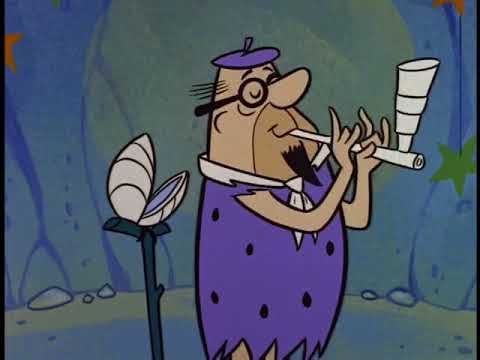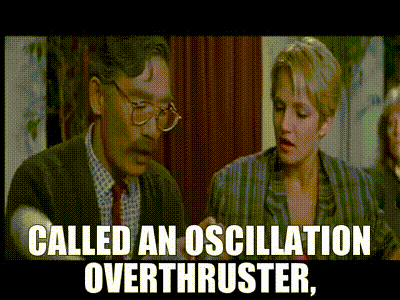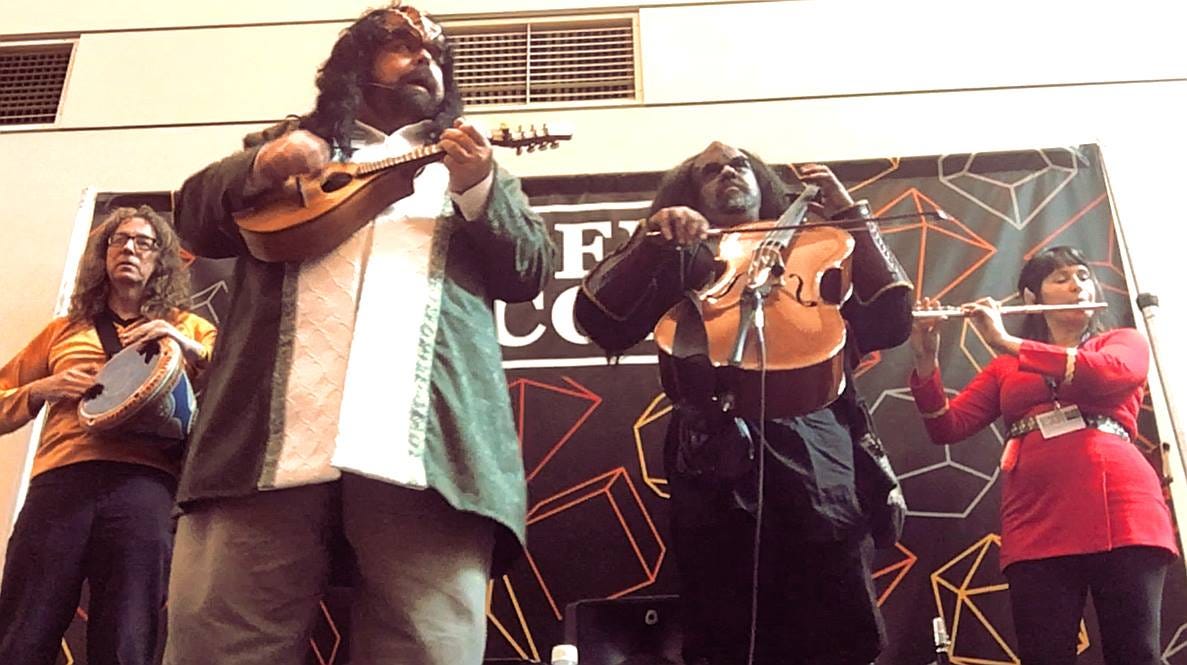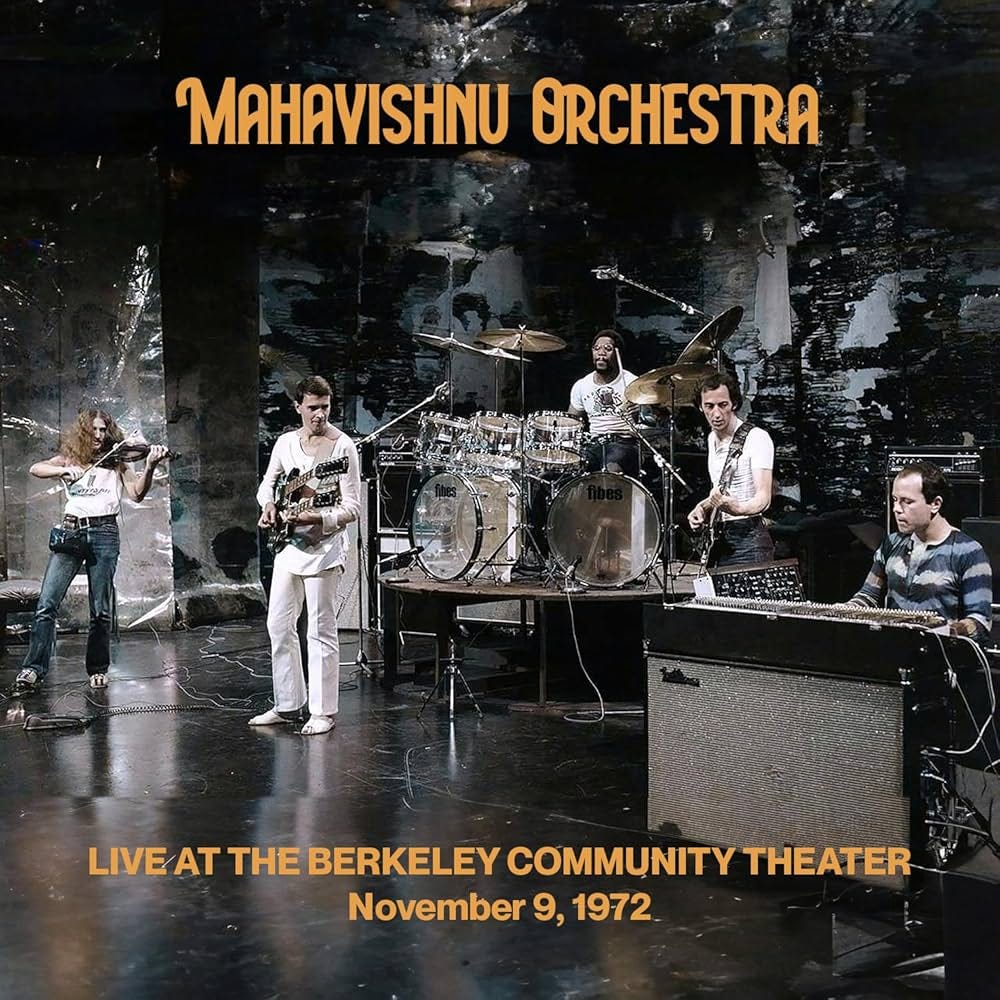Hyperbole & The Dark Arts of Marketing
Plus Chet Baker, Donald Byrd, Gerry Mulligan, and the Mahavishnu Orchestra!
Autumn is here at last! Cast aside your fears over vinyl packages warping in the back of superheated UPS trucks, don your favorite hoodie, and enjoy a pumpkin-spiced latte if that’s your thing.
Autumn also heralds the arrival of Marketing Season. End-of-year editorializing and gift guides are still weeks away. Yet, my Inbox is groaning under the weight of Grammy Award/For Your Consideration reminders, Black Friday/Record Store Day announcements, and a tsunami of announcements hyping year-end reissues, new releases, and box sets. I'm not complaining—the annual fall marketing frenzy puts my attention on a broad spectrum of music and makes me appreciate the artists and teams behind the scenes who bring that music to life. As a lifelong marketer, I admire a clever, well-executed campaign, and I'm always pleased when an artist or album has success in finding new audiences while thrilling the fans they've already got. Besides, reading these emails and social posts is an annual, humbling reminder to review and improve my writing. Because every year, at least a few make me laugh at myself—when I get carried away with my enthusiasm for the music I'm writing about, I can spout hyperbole with the best of 'em. And a little marketing spin makes everything—even day-to-day tasks—much less dull.
Promotional ballyhoo, intentional mystique, or a creatively architected backstory are longtime ingredients in the music industry marketing mix. The democratization of the Internet has been a blessing and a curse in this regard. Despite the array of tools and platforms comprising the modern marketing ecosystem, it’s more complicated than ever to rise above the clutter and tell a story worth hearing. This makes the messaging crucial—nobody would have ever heard of P.T. Barnum if he boasted about The Most Adequate Show On Earth. Nobody spends a weekend hiking to take a selfie in front of The Mid Canyon, either. So, creating the right messaging is crucial to make your story memorable.
Example #1: Hyperbole Conquers All
When describing impressive musicianship within a performance, such as a powerful solo or impressive display of finger-straining virtuosity, exaggerate the moment beyond believability. Be sure to include the potential for grievous and irreversible bodily harm and the ability to inflict unprecedented natural disasters. For instance:
Hot Lips Hannigan unleashes his solo in “Autumn Leaves (But My Mother-in-Law Stays)” with the destructive fury of an F5 tornado tearing through the metaphorical trailer park of your unconscious. Hannigan channels a maelstrom of frustration through his horn that builds to a furious peak, leaving only broken hearts, melted faces, and unpaid bar tabs in his wake. While the recording engineer fled screaming in terror mid-solo, the tape remained rolling and captured the moment. Long thought lost when the Rockland Dance Hall was razed to become a Pteranodon-fil-A, the original reels were discovered by a mysterious archivist known only as The Feldmaniac, who'll be reissuing it on his Zever Ending Story label for Record Store Day. The double LP features a 2,112-page book featuring essays from Hannigan's drummer, bassist, road manager, son, daughter, uncle, third cousin twice removed, dentist, best friend from third grade, math tutor, blacksmith, mohel, horticulturist, and ice sculptor.
Example #2: Presumptive Affiliations + Reader Anxiety = FOMO Gold
Make liberal use of namedropping. Suppose you insert a sufficient number of impressive-sounding musicians, labels, studios, or other affiliated VIPs using language that gaslights readers into fearing they SHOULD know what you’re talking about. In that case, they’ll believe in the record before even hearing a note! For instance:
The piano trio has been a stalwart jazz combo for decades, with so many performing and recording at any given time, there’s no silent Ramada Inn between New York and Los Angeles. But all who came before, those tinkling the ivories now, and those yet to form will be forever changed by a new apex predator threatening to change the nature of the piano trio forever. Pianist Furby Matlock was named an NEA Jazz Master while still in utero, while bassist Nails Herring Orthopedic Pelican received advanced degrees in bass performance and composition from Julliard, Berklee, University of North Texas, and Thomas Ewen Consolidated by age 12. Drummer Cruddy Itch can trace his musical roots back to caveman days when his ancestors used their faces to pound the skins before the invention of drumsticks. No wonder this new trio caught the attention of famed label president Ron Is, who signed them to a 23-album deal with unlimited free recording time at the legendary Van Helsing Studio in Hoboken, NJ. With Moe Barley overseeing their dreadnought-class vinyl using the hyperbaric analog cutting lathe driven by the Banzai Institute’s Oscillation Overthruster, the sonic engineering levels match the innovations in compositions and performance. You’ll never need to hear another piano trio album as long as you live. Plus, another week after that. This is the record EVERYONE will be talking about.
Example #3: Obscurity Triumphs Over Musical Attributes
When it comes to jazz—especially the loosely defined subgenre of spiritual jazz—the more bizarre, random, or outlandish the artists’ backstory is, the better. The nature of the music is mainly irrelevant. Bonus points if there’s a subplot involving why so few copies of their record were pressed or sold. Use vague, quasi-mystical language that wouldn’t sound out of place in an 8th-grade book report about Led Zeppelin, if possible. For instance:
The East Westville Township Bowed Saw Octet’s unlikely beginnings were forged in the era of forgotten yesterdays. It’s a tale passed down through generations of monks using only hand-carved implements to work the land. It is set to a series of structured and improvisational song cycles, each narrated with wordless chanting over a secret chord progression taught only to members of the order. The original spiritual ideology is long lost, but the message of the music lives on, even though an exact translation has eluded scholars and potheads for decades. Pressed in secret by the Sect of Garnak, only 17 copies survived after the Sect lost their tax exemption status and were forced to sell all inventory to pay their Jacoby & Meyers invoice. The last copy on Discogs went for over $6,000.
Example #4: Don’t Let the Truth Get in the Way of a Good Story
I realize it’s cool to take a global perspective on what’s traditionally been a US-centric music form. But really?
Are you ready for an intergalactic bebop adventure? Make room in your Kallax next to your J-Jazz collection for your next obsession—Klingon Jazz. For the first time on Black Friday Record Store Day, earth fans can enjoy audiophile pressings licensed from the vaults of the legendary Cheriya'ngan* label. Mastered by Kevin Gray at Cohearent Audio’s only dilithium crystal-powered cutting lathe and pressed by Cyrano Jones at Spacematic, each title is ghopDuʼ numbered and phaser etched.
*Cheriya'ngan doesn’t have an exact English equivalent, but roughly translated from Klingon, it’s “Not Our Tempo.”
When Math Has Surface Noise
As we’re talking about the foibles of the music business, there was a momentary panic last week after someone neglected to do the math before publishing an article suggesting that vinyl sales had fallen off a cliff, plummeting by 1/3 vs. the previous year. This came as a surprise to many and seemed pretty strange to me. I closely monitor sales trends and charts and speak regularly to colleagues at labels and management companies. There’s understandable griping about increased costs throughout the entire production chain. Fans are understandably grumbling about paying $40-$50 for quality vinyl that they’re returning for defects too often. Even so, the impact on sales hasn’t sounded THAT drastic. Other articles seem to conflict directly with the vinyl-sky-is-falling narrative, and something about the vinyl sales implosion stats seemed way off.
As it turns out, math remains essential. Vinyl sales didn’t plummet from 34.9 million units sold in 2023 to 23.3 million in 2024. Luminate, the company responsible for Billboard’s chart data, changed its counting methodology to create the illusion of a sales decline. But after pressing plant owners and record label accounting departments depleted Amazon’s global supply of portable defibrillators, Luminate issued a correction (and reminder) that the change in methodology meant a direct year-over-year comparison was apples to anchovies.
The punchline—vinyl sales were UP 6.2%.
New and Upcoming Records You’ll Want To Hear
Chet Baker didn’t live long enough to see Late Night Jazz receive the treatment it deserves. Recorded in February 1988, only three months before the fall (push?) from an Amsterdam hotel window that ended Baker’s life, Late Night Jazz gets a long overdue worldwide release next week via Elemental Music. Late Night Jazz contains 16 tracks across a double LP. It’s a gatefold package with a 12-page booklet with previously unpublished photos and essays from author and subject matter expert Brian Morton and session producer Jon Larsen. The essays are a fascinating lens into one of Baker’s final sessions, making for an immersive listening experience that’s especially powerful after sundown—the title is apt. Baker knows how to tug on your heartstrings like nobody’s business. I find the photo on the album jacket haunting, with Baker’s youthful good looks long worn away by a hard life of substance abuse and incarceration and his pained eyes almost foreshadowing the end that was just around the corner. Many thought it would been decades earlier—Baker’s unlikely 1970s comeback earned him both new fans and detractors. Some naysayers got off the Baker train, finding the juice wasn’t worth the squeeze when he started producing prodigious numbers of recordings during his prolific final decade. But some of his last albums (I’m looking at you, Live in Tokyo) were among his best, and Late Night Jazz makes a strong case for inclusion in his latter-era Hall of Fame. Credit where credit is due, though—guitarist Philip Catherine steals the show in several places with dazzling fretwork. Not just hot playing but channeling the atmosphere that Baker invokes. Philip Catherine is one of the most sympathetic musical partners that Baker has ever worked with, and his solos take Baker’s message and turn it up to eleven. Late Night Jazz sounds excellent!
Dateline: May 1959. This short-lived lineup of the Gerry Mulligan Quartet was wowing audiences as theater headliners or as part of a multi-artist festival roster. Mulligan alternated between baritone sax and piano, leading Art Farmer (trumpet), Bill Crow (bass), and Dave Bailey as they leaned into material from their superb Columbia Records release, What Is There to Say? Four of the seven tracks here hail from that LP, and three receive extended workouts. The sound on this archival release is excellent, with mastering/cutting by Kevin Gray, and the pressing is flat, centered, and quiet. Bassist Bill Crow penned a brief essay that provides additional context surrounding the formation of the group and the music they created together. Thanks to the folks at New Land for this review copy, which we’ve played several times here and enjoyed more with each spin—the band is tight, clearly enjoying themselves, and has terrific repartee. While New Land indicates this is a previously unreleased recording, let’s call it a largely undiscovered one instead. This music has been issued a few times on CD over the years by sketchy European labels—often from overmodulated or high-generation off-air tapes—and with little care taken regarding proper details, composer credits, or spelling. Such shoddy presentations might naturally lead any fan of these musicians to skip this recording as “another crap radio broadcast,” so it’s fantastic to see this music receive proper treatment. As the show was professionally captured by Swedish National Radio, and New Land worked with their team to acquire and restore the tapes from their archives, the recording quality is top shelf, and the mix is just right. This is one of those records that might easily slip under your radar. Don’t let it. Available Oct 18 on vinyl, CD, and across digital platforms.
Listening to this live Mahavishnu Orchestra album was such an intense experience that my Apple Watch closed my rings, alerted emergency services, and suggested I meditate immediately. Jazz artists like Miles Davis and Larry Coryell and rockers like Frank Zappa sparked the flames of fusion in the late 60s. But the Mahavishnu Orchestra fanned those flames into a conflagration, blowing countless minds (and more than a few speakers) before imploding spectacularly and acrimoniously after two and a half years. In their wake, they left two fully realized records, one aborted studio work-in-progress, an official live album, and ~500 gigs that some attendees are *STILL* talking about. Another live album joins the Mahavishnu Orchestra legacy this week, Live at the Berkeley Community Theater November 9, 1972. Mahavishnu gigs, according to those lucky enough to attend them, could be life-changing, blending Coltrane-inspired questing, cutting-edge musicianship, and loud, potent rock energy. I’ve had various digital copies of this concert for years, and the sound quality of this vinyl edition is equal to the best of them. It’s on par with their officially released live album, 1973’s Between Nothingness and Eternity. Still, this show has the benefit of being recorded before the tensions from inter-band vitriol became a distraction. Acoustic jazz purists seeking blues, bop, and boogaloo won’t find much of that here. But open-minded jazz enthusiasts with an appetite for electricity will marvel at the reckless precision of their spiritually-infused instrumental prowess and profound musical dialogues. Their range is staggering, from meditative, melodic acoustic bliss to a virtuosic cacophony that threatens to reduce your listening room to smoldering rubble. This release is available on vinyl, CD, and streaming services, so there’s plenty of opportunity to see if it’s right for you.
When a record makes you late for an appointment, that’s a good sign. When you find yourself explaining the reason for your tardiness, and the client isn’t angry but instead asks you to wait while they open a browser window to order the record, that’s an even BETTER sign! I didn’t own a copy of Howard McGhee & Teddy Edwards’s Together Again on vinyl before this one, nor did I give it much digital love. Not for any reason other than lots of other listening taking priority. But upon opening the package (thank you, Craft Recordings, for the review copy), reading the liner notes, and taking note of the musicians involved, it’s clear I’m late to the party. In addition to McGhee on trumpet and Edwards on tenor sax, the rhythm section includes Phineas Newborn Jr.-piano, Ray Brown-bass, and Ed Thigpen-drums. It’s Phineas Newborn Jr. who elevates this record from really good to pretty great, with one corker of a solo after another, shifting from a leader of the rhythm section to co-leader with the primary soloists. Phineas Newborn Jr. is superbly well-placed in the mix, as is bassist Ray Brown—engineer Roy DuNann dialed this session in PERFECTLY. A great mix as a starting point, a great mastering job by Bernie Grundman, and an excellent pressing by QRP in a tip-on jacket make for a compelling package. Opening with the Edwards-composed title track and closing with the McGhee-penned “Sandy”—the album's two longest and best tunes—this tight, six-track hard bop fiesta is awesomely played and sounds excellent. Good enough to draw you in and make you late!
Arguing about music is the one thing that hardcore music fans love even more than music itself. Neither legitimate music experts nor graduates of Dunning–Kruger Musicology College are fussy about where these battles occur. They’ll debate in bars, man caves, Ubers, or college dorm rooms about which lineup is “best” for a particular group, which album is “most iconic” for an artist, or which years were “prime” for a prestigious label. But sparring over opinions usually ends in a series of draws, with wins going to those delivering the most memorable, searing roast of the opposing viewpoint. When partial facts—often warped by the mists of time—enter the fray, well, the gloves REALLY come off. Ongoing debates over “lost albums” are classic examples of music-nerd warfare. Lost albums come in many guises. Some exist only in rumor. Others, partially or wholly recorded, remain locked in a vault, held in legal limbo, or stuck in artist/label approval purgatory. The anecdotes and backstories are just as diverse as the albums themselves, including deliberate, rageful, drug-fueled tape destruction, studio/label/artist neglect leading to reels or hard drives going MIA or unresolved technical issues awaiting rescue by technology yet to be invented. In rock music, legendary titles from Bob Dylan, Prince, The Beach Boys, and countless others have been thoroughly discussed, researched, and in some cases liberated, only to face the challenge of living up to decades of anticipation and expectation. Jazz fans continue to ponder the possibilities of Jackie McLean’s July ‘68 session with Woody Shaw and Bobby Hutcherson or Tyrone Washington’s August ‘68 session with Herbie Hancock and Jack DeJohnette. The promise of dozens of lost albums motivated the late jazz historian Michael Cuscuna to badger his way into the Blue Note vaults in the mid-1970s...
The liner notes I had the honor of writing for Donald Byrd’s Kofi, which was just reissued on Blue Note’s Tone Poet series, contain the rest of the story and a deep dive into the music. Grab a copy at your favorite record store!















![Amazon.com: Kofi (Blue Note Tone Poet Series)[LP]: CDs & Vinyl Amazon.com: Kofi (Blue Note Tone Poet Series)[LP]: CDs & Vinyl](https://substackcdn.com/image/fetch/$s_!mEq9!,w_1456,c_limit,f_auto,q_auto:good,fl_progressive:steep/https%3A%2F%2Fsubstack-post-media.s3.amazonaws.com%2Fpublic%2Fimages%2Ffd8fd68d-ff5b-48f7-bf2a-80d6f434fc48_1000x1000.jpeg)
Deep bow Syd! This had me laughing out loud this am.